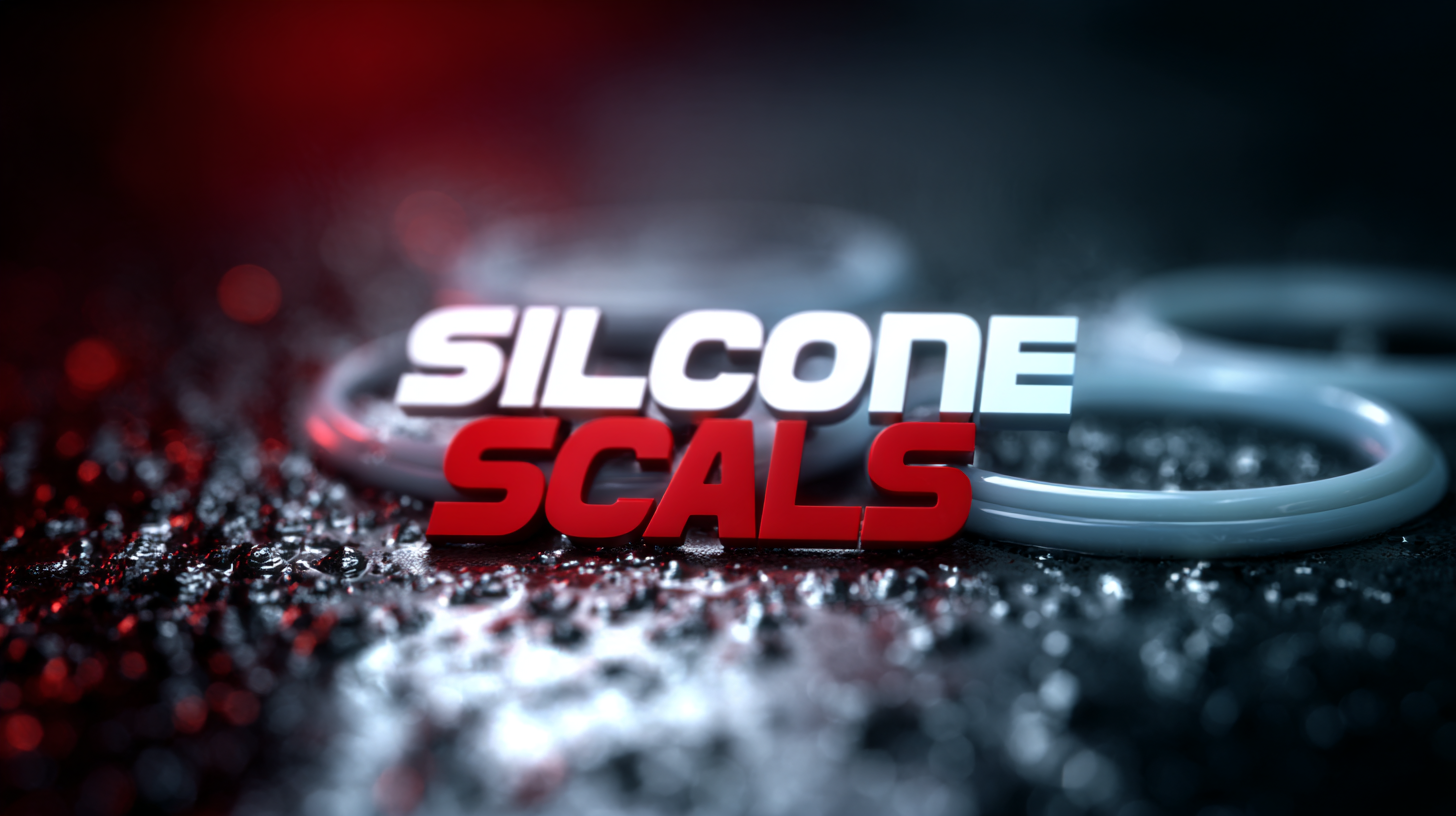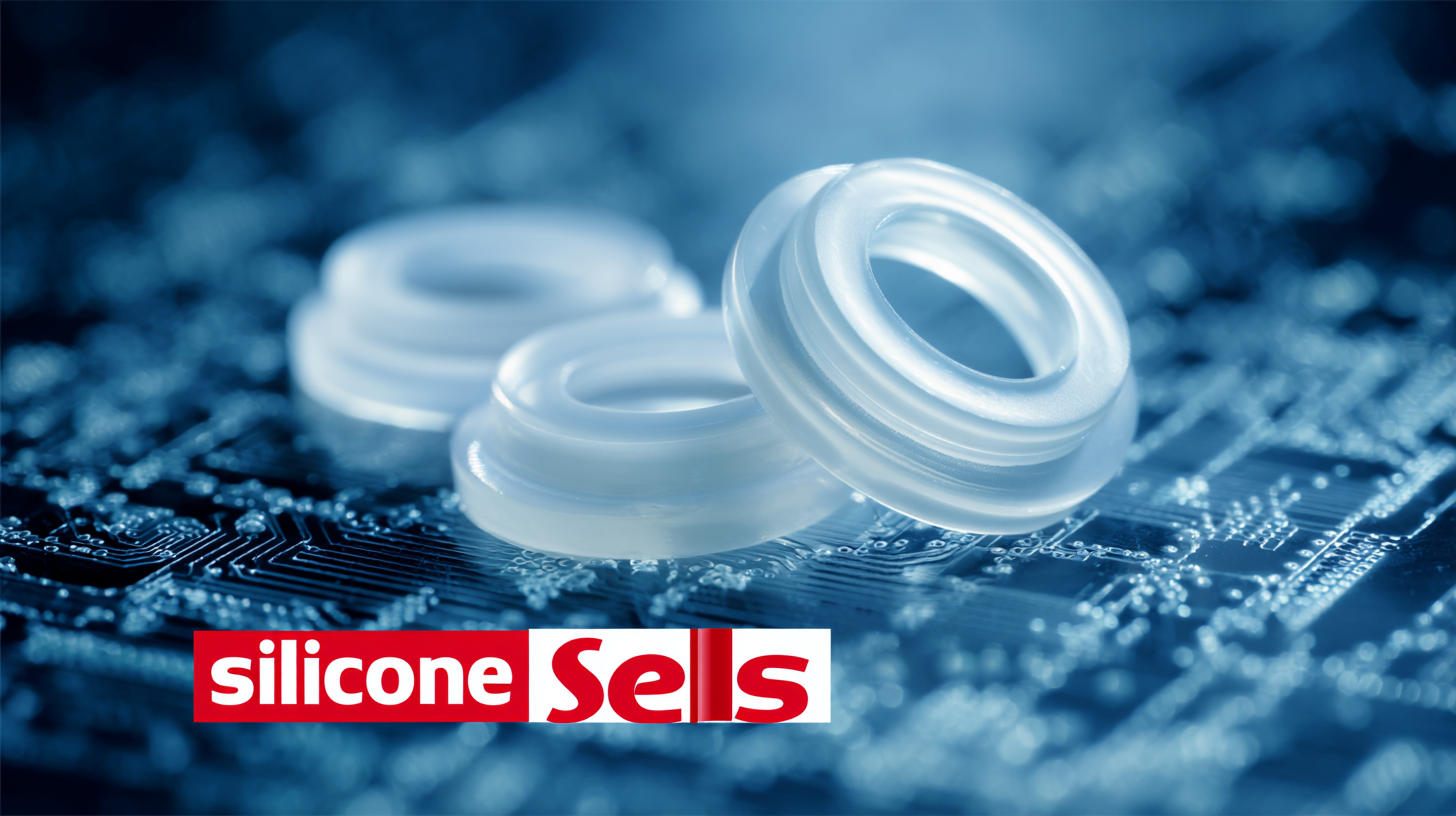 As we look ahead to 2025, the industry of Silicone Seals is poised for transformative growth driven by evolving market demands and technological advancements. According to a recent market research report by Grand View Research, the global silicone sealants market is expected to reach $3.7 billion by 2025, reflecting a compound annual growth rate (CAGR) of 5.6% from 2019 to 2025. This surge is attributable to the increasing need for high-performance sealing solutions across various sectors, including automotive, construction, and electronics. In this blog, we will explore the top strategies for navigating the future of Silicone Seals, analyzing key industry trends and delivering effective solutions that can cater to the dynamic requirements of a diverse clientele. By understanding these trends and harnessing innovative practices, businesses can position themselves strategically within this ever-evolving landscape.
As we look ahead to 2025, the industry of Silicone Seals is poised for transformative growth driven by evolving market demands and technological advancements. According to a recent market research report by Grand View Research, the global silicone sealants market is expected to reach $3.7 billion by 2025, reflecting a compound annual growth rate (CAGR) of 5.6% from 2019 to 2025. This surge is attributable to the increasing need for high-performance sealing solutions across various sectors, including automotive, construction, and electronics. In this blog, we will explore the top strategies for navigating the future of Silicone Seals, analyzing key industry trends and delivering effective solutions that can cater to the dynamic requirements of a diverse clientele. By understanding these trends and harnessing innovative practices, businesses can position themselves strategically within this ever-evolving landscape.
In 2025, the silicone seal industry is expected to undergo significant transformations, particularly in the realm of after-sales service. As businesses increasingly prioritize customer satisfaction, organizations are redefining their service models to offer enhanced support and seamless experiences for their clients. One of the most compelling advantages of silicone seals is their durability and resilience, which in turn creates a need for companies to provide comprehensive after-sales services to instill confidence in their customers regarding the longevity and performance of these products.

The implementation of advanced technologies such as IoT and AI is set to revolutionize after-sales service in the silicone seal industry. Real-time monitoring of product performance will allow companies to proactively address potential issues before they escalate, ensuring that clients receive dependable support. Furthermore, personalized after-sales care, including tailored maintenance plans and easy access to technical resources, will empower users to maximize the lifespan of their silicone seals. By focusing on these elements, manufacturers can not only enhance customer loyalty but also establish themselves as industry leaders committed to excellence in service.
In the upcoming years, the landscape of silicone seal technology is expected to evolve significantly, particularly as maintenance costs become a critical factor influencing performance. As industries seek to enhance their efficiency while reducing operational expenditures, understanding the relationship between maintenance practices and seal performance will be key. Regular maintenance not only prolongs the lifespan of silicone seals but also ensures that their optimal sealing capabilities are maintained, minimizing the risk of leaks and failures.
Moreover, the choice of silicone seal materials and designs plays a pivotal role in their maintenance requirements. Advanced formulations are now being developed that offer superior resistance to environmental factors, including heat, moisture, and chemicals. By investing in high-quality products, companies can achieve lower long-term maintenance costs, which ultimately translates into improved productivity and reliability. As we move towards 2025, industries that prioritize the analysis of maintenance costs alongside the selection of durable silicone seals will likely lead the way in efficiency and sustainability.
| Aspect | 2023 Data | 2025 Projected Data | Change (%) |
|---|---|---|---|
| Market Size (Million USD) | 1500 | 1800 | 20% |
| Average Maintenance Cost (USD/Year) | 300 | 250 | -17% |
| Performance Ratings (1-10 Scale) | 7.5 | 8.5 | 13.33% |
| R&D Spending (% of Revenue) | 5% | 7% | 40% |
| Customer Satisfaction (%) | 78% | 85% | 9% |
The silicone seal industry is expected to undergo significant transformations by 2025, driven by innovative technologies and a focus on enhancing service solutions. One of the promising advancements is the development of high-performance silicone materials that offer superior durability and flexibility. These materials can withstand extreme temperatures and harsh environmental conditions, making them ideal for various applications, from automotive to construction. As manufacturers invest in research and development, we can anticipate the introduction of silicone seals that not only perform better but also contribute to energy efficiency and sustainability.
In addition to material innovations, smart technology integration is set to revolutionize silicone seal solutions. The emergence of IoT (Internet of Things) in manufacturing processes allows for real-time monitoring and predictive maintenance. This means that silicone seals can now be equipped with sensors to detect wear and tear, alerting users to potential failures before they occur. Such advancements enhance service reliability and minimize downtime, ultimately leading to cost savings for businesses. As we approach 2025, embracing these innovations will be crucial for industries looking to improve their operational efficiency and environmental impact through cutting-edge silicone seal technology.
When it comes to silicone seals, minimizing repair and replacement costs is essential for maintaining efficiency in various industries. One effective practice is to implement regular maintenance checks. By inspecting the seals frequently, companies can identify early signs of wear and tear. This proactive approach allows for timely repairs, preventing more significant issues that could lead to costly replacements. Additionally, training staff on proper handling and installation techniques can significantly extend the lifespan of silicone seals, ensuring they perform optimally.
Moreover, selecting high-quality materials from reputable suppliers can make a substantial difference in long-term costs. Investing in premium silicone seals may seem more expensive upfront, but they often offer superior durability and performance, reducing the likelihood of premature failures. Applying best practices like using the right sealant for specific applications and adhering to manufacturer guidelines further minimizes the chances of needing repairs. By focusing on preventive measures and quality materials, businesses can effectively navigate the challenges associated with silicone seals while keeping costs under control.
In today's competitive market, consumer expectations for after-sales support in silicone seal products are evolving rapidly. Buyers now demand not only high-quality products but also comprehensive support services that enhance their overall experience. This includes readily available technical assistance, user-friendly guides, and clear warranty policies that affirm the brand’s commitment to its customers. As consumers become more informed and discerning, manufacturers must prioritize after-sales service to build trust and foster brand loyalty.

Moreover, the rise of online shopping has amplified the need for effective after-sales support. Customers expect prompt responses to their inquiries, swift resolution of issues, and accessible resources for troubleshooting. Innovative solutions, such as live chat features and instructional videos, can significantly enhance the consumer experience. Companies that invest in robust after-sales support systems will likely distinguish themselves in an increasingly saturated market, ultimately satisfying consumer needs and paving the way for repeat business in 2025 and beyond.
